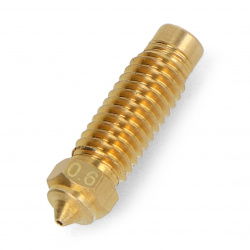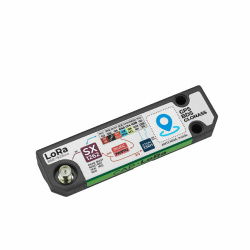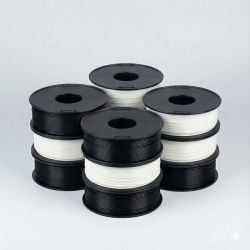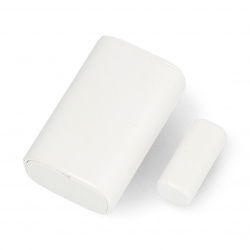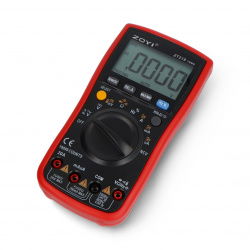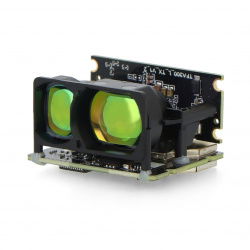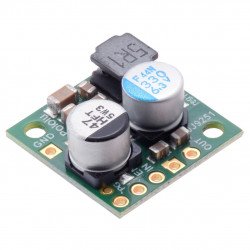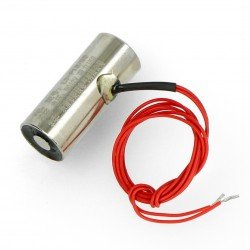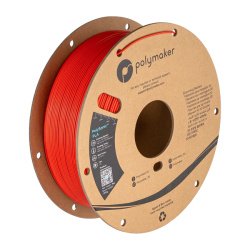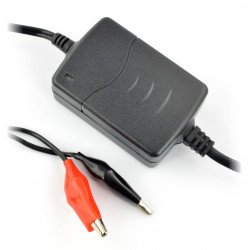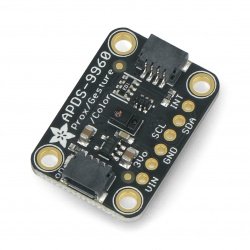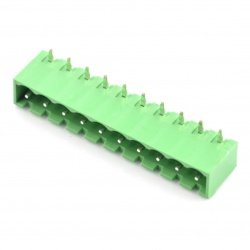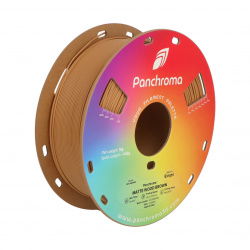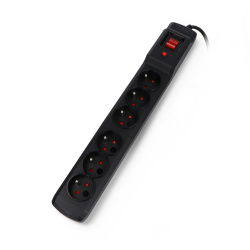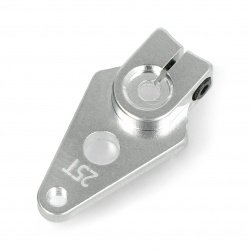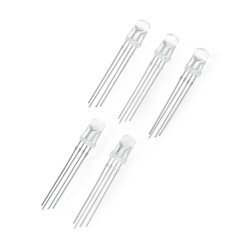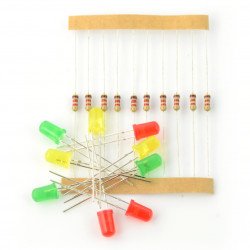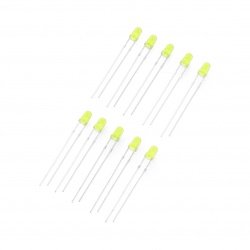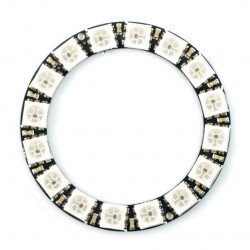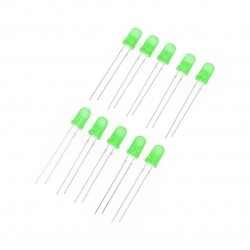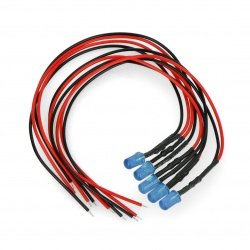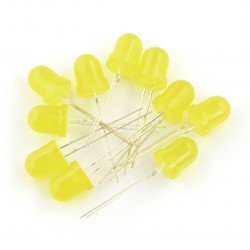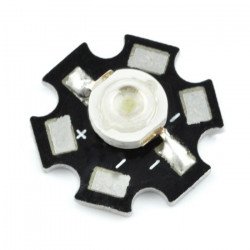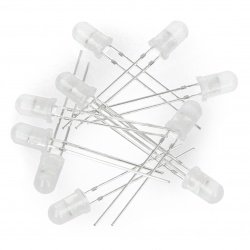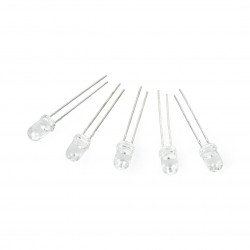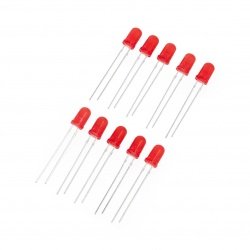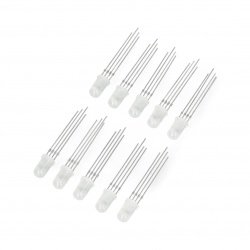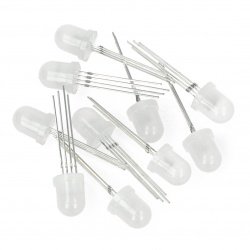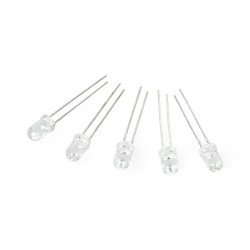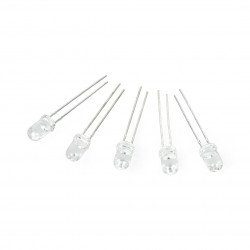With the arrival of LED technology, there has been a revolution in the field of electronics and electrical engineering. It is a new solution that allows to significantly expand the possibilities of using light. One of its main advantages is its above-average energy efficiency. LEDs use much less energy than classic incandescent lamps. They are also small in size, so they are used in many smaller electronic devices. They emit electromagnetic radiation from several ranges - ultraviolet, visible light and infrared. Currently we can use LEDs, which emit not only white light, but also a wide range of colors. This makes them an excellent decorative element of apartments, houses, public buildings and outdoor areas. LEDs are also one of the technologies used in advertising. In Botland shop are available all the elements necessary to build a solid LED system for various purposes. We offer both LEDs, as well as controllers and power supplies and numerous mounting accessories.
LED diodes
LED RGB 5mm common anode - 5 pcs
LED RGB 5 mm with common anode. Lens transparent. The product is packed in 5 pieces.Set of 5mm LEDs 10pcs with resistors
Set of ten 5 mm LEDS with resistors. The kit includes: 10 PCs resistors 1.2 kΩ and 3 PCs green, red and yellow LEDs and 1 blue LED.LED 3mm yellow - 10pcs. - justPi
Set of 10 pieces of yellow light-emitting diodes (LEDs) with a lens diameter of 3 mm. It emits radiation in the visible light range. It is designed for THT through-hole...LED RGB Ring WS2812 5050 x 16 diodes - 44mm
The ring consists of 16 individually addressed RGB LEDs 5050 with integrated control unit. Module needs one microcontroller output. Outer circle diameter is 44 mm.LED RGB Ring WS2812B 5050 x 24 diodes - 68mm
The ring consists of 16 individually addressed RGB LEDs 5050 with integrated control unit. Module needs one microcontroller output. Outer circle diameter is 68 mm.LED 5mm green - 10pcs. - justPi
Set of 10 pieces of green LEDs. The diameter of the lens is 5 mm. The diodes emit radiation in the visible light range. They are designed for THT through-hole mounting. The...5mm 12V LED with resistor and wire - blue - 5pcs.
5mm blue LED with attached resistor and 18cm long cable. It is powered by 12 V DC.Power LED Star 3 W LED - neutral white with a heat sink
Power LED neutral white 3 W with a heat sink.LED 3mm blue - 10pcs. - justPi
Set of 10 pieces of blue LEDs with a lens diameter of 3 mm. It emits radiation in the visible light range. It is designed for THT through-hole mounting. LEDs are produced in...Power LED Star 1W - warm white with heat sink
Power LED warm white with power of 1 watt and with a heat sink.LED strip RGB WS2812 5050 x 8 LEDs - 53mm
The strip consists of 8 individually addressed RGB LEDs 5050 with integrated driver. To control the module, one microcontroller's pin is sufficient. The module length is 53 mm.Diode LED 5mm RGB WS2811 addressed - 10pcs.
LED 5 mm RGB WS2811 with integrated control unit allows you to control the device via a 1-wire bus.LED RGB Ring WS2812B 5050 x 12 diodes - 50mm
A ring of 12 individually addressable 5050 RGB LEDs with integrated driver. One pin of the microcontroller is enough to operate the module. The outer diameter of the circle is...RGB LED WS2811 8mm addressing - 10pcs
LED RGB 5 mm WS2811 with integrated control unit allows you to control the device via the 1-wire bus.LED 5mm white warm clear - 5pcs
LED diode 5 mm warm white. Transparent lens. Brightness: 14 000 mcd. Beam angle: 15 °. Price for 5 pieces.LED 5mm blue - 10pcs. - justPi
Set of 10 pieces of blue LEDs. The diameter of the lens is 5 mm. The diodes emit radiation in the visible light range. They are designed for THT through-hole mounting. The...LED 5mm flashing blue clear - 5pcs
LED diode 5 mm blue flashing. Transparent lens. Price for 5 pieces.Module 3x LED SMD5050 12V IP65 white cold
Module consisting of 3 LEDs SMD 5050. The strip is taped on the reverse side. Price for 1 PC.See also
The breakthrough discovery of LED technology. What have we gained?
LEDs are increasingly replacing standard bulbs, including halogen bulbs, which for a long time have been considered the best solution in terms of economy, aesthetics and safety. Initially, LEDs did not enjoy such a high recognition, because they differed significantly from those we can use today. They did not emit enough light. They were used only for alternative purposes, replacing bulbs and fluorescent lamps in some situations. With the development and improvement of LED technology, better diodes began to appear, showing more and more ability to illuminate the environment and objects.
Modern LEDs are characterized by a longer service life, we can use them up to 50,000 hours, which means several times longer operation than in the case of classic light bulbs. If we use LEDs daily for 8 hours, there is a chance that they will serve us even for 20 years. Moreover, LEDs are extremely efficient. They use much less energy than fluorescent or incandescent bulbs. Their luminous efficiency is estimated at 80-90%. By this we mean that as much as 80-90% of the energy that is supplied to the device is used by them. The losses are therefore 10-20%. For comparison, the efficiency of an ordinary light bulb is 10% maximum. LEDs are commonly used for materials with greater sensitivity to heat. This is because they give off small amounts of heat, so they can have direct contact with different materials and people. They are also resistant to impacts and mechanical damage, so they are used in places exposed to possible acts of vandalism, destruction or malfunction. In the production of LEDs, no materials harmful to humans and the environment are used. Among other things, mercury, which poses a very high risk to our health and even life, has been abandoned. This makes it safe for humans and environmentally friendly.
How do LEDs work?
The process of operation of LEDs uses electroluminescence technology. It consists in the production of light by recombination of holes in conductors and electrons. In this structure there are enriched areas where there are more electrons and holes, i.e. these holes. Electrons from the N region (electrons) recombine with holes located in the P region (holes). In the conductivity band there are free electrons, while in the valence band there are holes. Energy is created, which is emitted as a photon of light. What is the electromagnetic wavelength depends on the energy gap, i.e. the distance between the conductivity band and the valence band.
Check our offer for LED technology. We offer a wide range of LEDs, as well as extremely practical LED strips, which you can use for furniture and decorative lighting. We also offer controllers and drivers, so that you can build an advanced LED system.































































































































































































































































































































